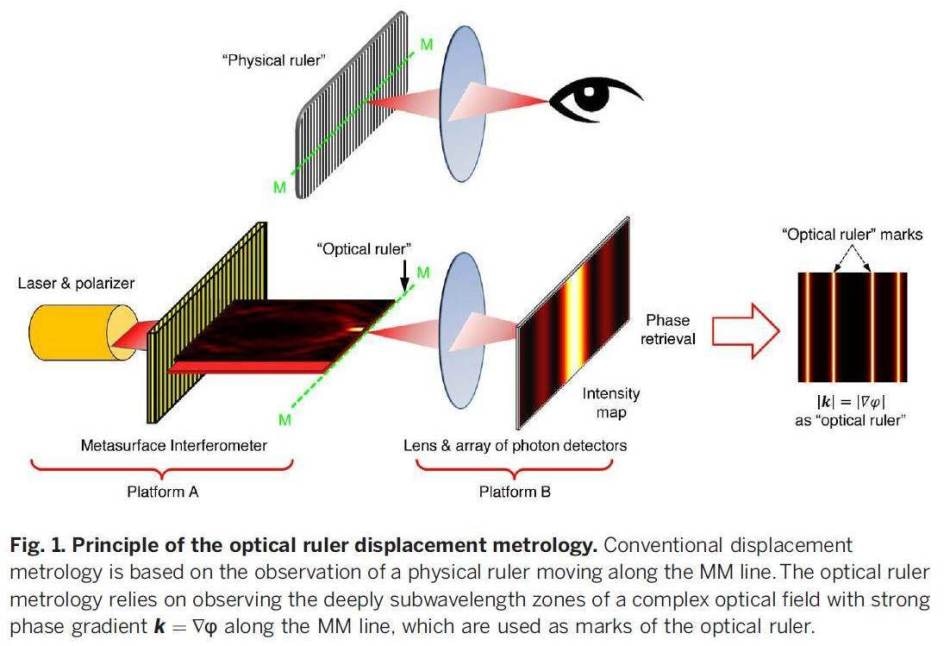Sep 6 2019
Researchers at Nanyang Technological University, Singapore (NTU Singapore) have formulated a novel way to compute distances at the nanoscale—one nanometer is one-billionth of a meter—with the use of light.
 (Image credit: NTU Singapore)
(Image credit: NTU Singapore)
Devices that use light to view objects, like microscopes, have a major drawback based on the laws of physics, which is their resolving power.
The smallest distance that optical devices can dependably image is equivalent to half the wavelength of the light used, called the “diffraction limit.”
The diffraction limit is thus more than 400 nm, virtually half the wavelength of near-infrared light. This is about 250 times smaller than the width of a human hair (100 µm).
But since researchers are keen on observing very small objects like viruses and nanoparticles that come in the size range of 10 to 100 nm, an optical resolution of 400 nm is not enough.
Presently, nanometer-scale measurements are conducted using indirect or non-optical techniques, like scanning electron microscopy which are not always achievable, can be laborious, and necessitate costly equipment to function.
However, a discovery reported in the journal Science by Professor Nikolay Zheludev and Dr Guanghui Yuan at NTU’s School of Physical & Mathematical Sciences explains a new optical technique that can compute displacements of a nanometer—the smallest distance ever directly measured, using near-infrared light.
The researchers’ theoretical calculations suggest that devices based on this technique could eventually compute distances down to 1/4000 the wavelength of light, to approximately the size of a single atom.
Their achievement was realized using a 100-nanometer thick gold film with more than 10,000-minute slits cut into it to diffract laser light and to manipulate an optical phenomenon called “superoscillation.”
The concept of superoscillation first came in the 1980s from the quantum physics study of Yakir Aharonov, an Israeli physicist, and was then expanded to optics and other fields by the British physicist Michael Berry. Superoscillation takes place when a “sub-wavelength” in a light wave oscillates comparatively faster than the light wave itself.
How it Works
Our device is conceptually very simple. What makes it work is the precise pattern in which the slits are arranged. There are two types of slits within the pattern, oriented at right angles to each other. When polarised laser light strikes the gold film, it creates an interference pattern containing extremely tiny features, much smaller than the wavelength of light.
Dr Guanghui Yuan, Postdoctoral Fellow, Centre for Disruptive Photonic Technologies, The Photonics Institute, NTU Singapore
After this polarized light disperses from Zheludev and Yuan’s device, it creates two cross-polarized beams: one a superoscillatory “interference pattern” comprising fast phase variation and the other a reference wave to sense the phase of the superoscillatory field.
From the phase, it is possible to compute the superoscillation’s gradient, or “local wavevector,” which has a very narrow width (400 times narrower than the diffraction limit) and therefore can be used as a high-resolution optical ruler.
An obstacle that the NTU researchers had to surpass was that these tiniest superoscillations are not visible in the amplitude of the light wave, but in its phase. To work out the phase of the light field, the researchers had to develop a special method that could compare the intensities created by different polarization states of laser light.
This phase-sensitive technique is a major improvement over previous attempts to use superoscillation for optical measurement. Earlier methods, developed by us as well as others, used a class of superoscillations that correspond to localized ‘hot spots’ in intensity. The advantage of hot spots is that they are easy to detect. Yet if the goal is to measure the shortest distances possible, phase superoscillations are much more suitable, due to their smaller size.
Nikolay Zheludev, Professor and Co-Director, The Photonics Institute, NTU
Future Applications
Professor Zheludev, who also serves as co-director of the Optoelectronics Research Centre at Southampton University in the UK, said their discovery would probably find application in industry.
“This method of optical measurement will be very useful in future, such as in the manufacturing and quality control of electronics, where extremely precise optical measurements are required, and to monitor the integrity of nano-devices themselves,” Zheludev added.
Going forward, the researchers hope to create a small version of their apparatus using optical fibers and to market the technology as a new type of ultra-precise optical ruler, which would be advantageous to advanced manufacturing processes, like optoelectronics devices and semiconductor fabrication, which are the mainstay of the telecommunications sector.
Source: https://www.ntu.edu.sg/Pages/home.aspx